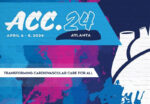Drug-coated balloons (DCB) have proven to be effective in the treatment of femoropopliteal pathology, although they entail complications such as recoil, residual stenosis, and dissection. Their outcomes could be improved through proper and enhanced vessel preparation, both before and after the procedure. Intravascular ultrasound (IVUS) offers the advantage of characterizing plaque and assessing vessel diameter.<a href="https://solaci.org/en/2024/04/17/acc-2024-ivus-dcb-3/" title="Read more" >...</a>
Transcatheter Myotomy for the Treatment of the Dynamic Obstruction of the Left Ventricular Outflow Tract
Septal reduction therapies are used to mitigate the symptoms caused by dynamic left ventricular outflow tract (LVOT) obstruction and the associated mitral regurgitation (MR) that can surge in hypertrophic cardiomyopathy (HCM). Alternative therapies to treat LVOT obstruction include surgical procedures, i.e. surgical myotomy or myomectomy, or alcohol and radiofrequency septal ablation (intracardiac, transthoracic and endocardial,<a href="https://solaci.org/en/2024/03/24/transcatheter-myotomy-for-the-treatment-of-the-dynamic-obstruction-of-the-left-ventricular-outflow-tract/" title="Read more" >...</a>
Post TAVR Long Term Outcomes in Patients with Chronic Inflammatory Disease
Patients suffering from immune-mediated chronic inflammatory disease (CID) face a high risk of developing heart disease, including aortic valve disease. Inflammatory vascular disease when triggered by an autoimmune condition, can prompt a harmful response leading to valve degeneration, with increased calcification and fibrosis, and the associated progression of stenosis, failure or both. Prior research has<a href="https://solaci.org/en/2024/03/04/post-tavr-long-term-outcomes-in-patients-with-chronic-inflammatory-disease/" title="Read more" >...</a>
Edge-to-Edge Repair in Cardiogenic Shock
The edge-to-edge approach with MitraClip has been established as a valid strategy for patients who experience severe symptomatic mitral regurgitation (MI) with high risk for surgery, currently with a IIa indication. MI complicated by cardiogenic shock, which results in a high risk for conventional valve surgery, is a particularly complex scenario. In such a case,<a href="https://solaci.org/en/2024/02/26/edge-to-edge-repair-in-cardiogenic-shock/" title="Read more" >...</a>
Coronary Artery Disease in TAVR: Unsolved Dilemma
Aortic stenosis shares risk factors with coronary artery disease (CAD), and its prevalence varies according to age, reaching approximately 50% or more in some registries. Deciding when to treat and the need for percutaneous intervention presents a challenge. It has been established that epicardial stenosis at proximal level, or the medial segment, requires intervention, especially<a href="https://solaci.org/en/2024/01/30/coronary-artery-disease-in-tavr-unsolved-dilemma/" title="Read more" >...</a>
TAVI-in-TAVI with Balloon-Expandable Valves
TAVI (Transcatheter Aortic Valve Implantation) has proven to be beneficial and is currently performed in increasingly younger and lower-risk patients. However, as with surgical bioprostheses, structural deterioration, whether due to stenosis or regurgitation, is one of the challenges we must address. While currently uncommon, this is an issue we will probably see more and more<a href="https://solaci.org/en/2023/09/12/tavi-in-tavi-with-balloon-expandable-valves/" title="Read more" >...</a>
Transcatheter Mitral Valve Replacement vs. Medical Therapy
Mitral valve regurgitation (MR) is a common cause behind heart failure and is associated to hospitalization for heart failure and higher mortality. Transcatheter edge-to-edge repair (TEER), together with guideline-directed medical therapy (GDMT) has been shown beneficial in high risk patients, according to the COAPT study. However, there is a significant group of patients that make<a href="https://solaci.org/en/2023/07/04/transcatheter-mitral-valve-replacement-vs-medical-therapy/" title="Read more" >...</a>
EuroPCR 2023 | Intravascular Lithotripsy (IVL) Balloon in the Treatment of Underexpanded Stents
Calcified coronary plaque (CCP) is a challenge for interventional cardiology. Stent underexpansion (SU) commonly associated with CCP could predispose to stent thrombosis or restenosis. Currently, SU in severe CCP can be treated by rotational atherectomy, orbital atherectomy, balloon cutting/scoring, non-compliant high-pressure balloons, or intravascular lithotripsy (IVL). The aim of this meta-analysis was to determine the<a href="https://solaci.org/en/2023/05/22/europcr-2023-intravascular-lithotripsy-ivl-balloon-in-the-treatment-of-underexpanded-stents/" title="Read more" >...</a>
The most read scientific articles in interventional cardiology in February on our website
Below, we share February’s most read scientific abstracts in interventional cardiology at solaci.org. Can Drug Coated Balloon Be a Valid Option for Small Vessels? One of the challenges of percutaneous coronary interventions (PCI) are <2.5 mm vessels, since complications and restenosis complications rate are higher than with >3.0 mm vessels. Is Using Drug-Eluting Balloons and<a href="https://solaci.org/en/2023/03/22/the-most-read-scientific-articles-in-interventional-cardiology-in-february-on-our-website/" title="Read more" >...</a>
Plaque Erosion with No Stenting in Acute Coronary Syndrome: Are There Event Predictors to Avoid This Strategy?
Event predictors in patients with plaque erosion and no stenting. A third of all acute coronary syndrome (ACS) cases are caused by plaque erosion. In the initial EROSION study, it was shown that patients with plaque erosion (as evidenced by OCT, with stenosis <70%, TIMI III flow, and asymptomatic) were stabilized without stent implantation (no<a href="https://solaci.org/en/2023/02/13/plaque-erosion-with-no-stenting-in-acute-coronary-syndrome-are-there-event-predictors-to-avoid-this-strategy/" title="Read more" >...</a>









